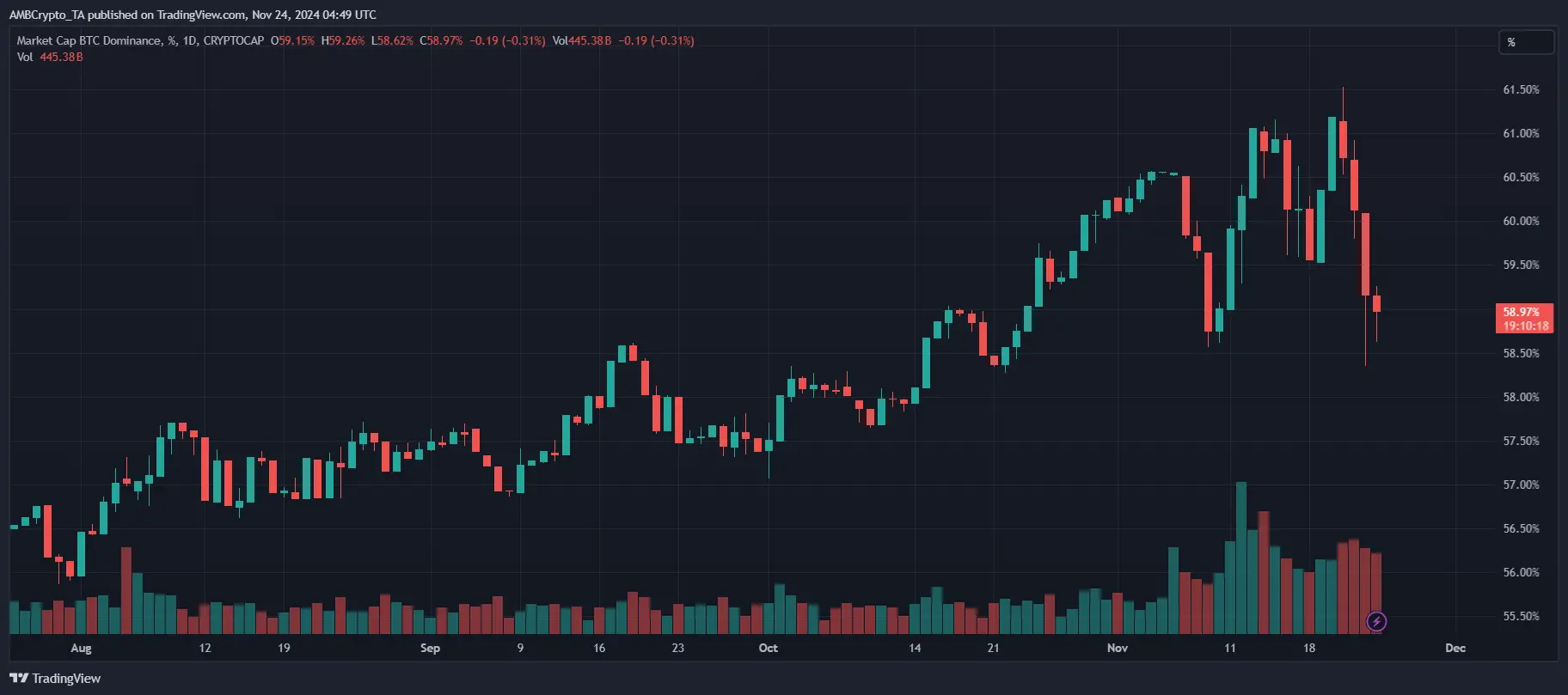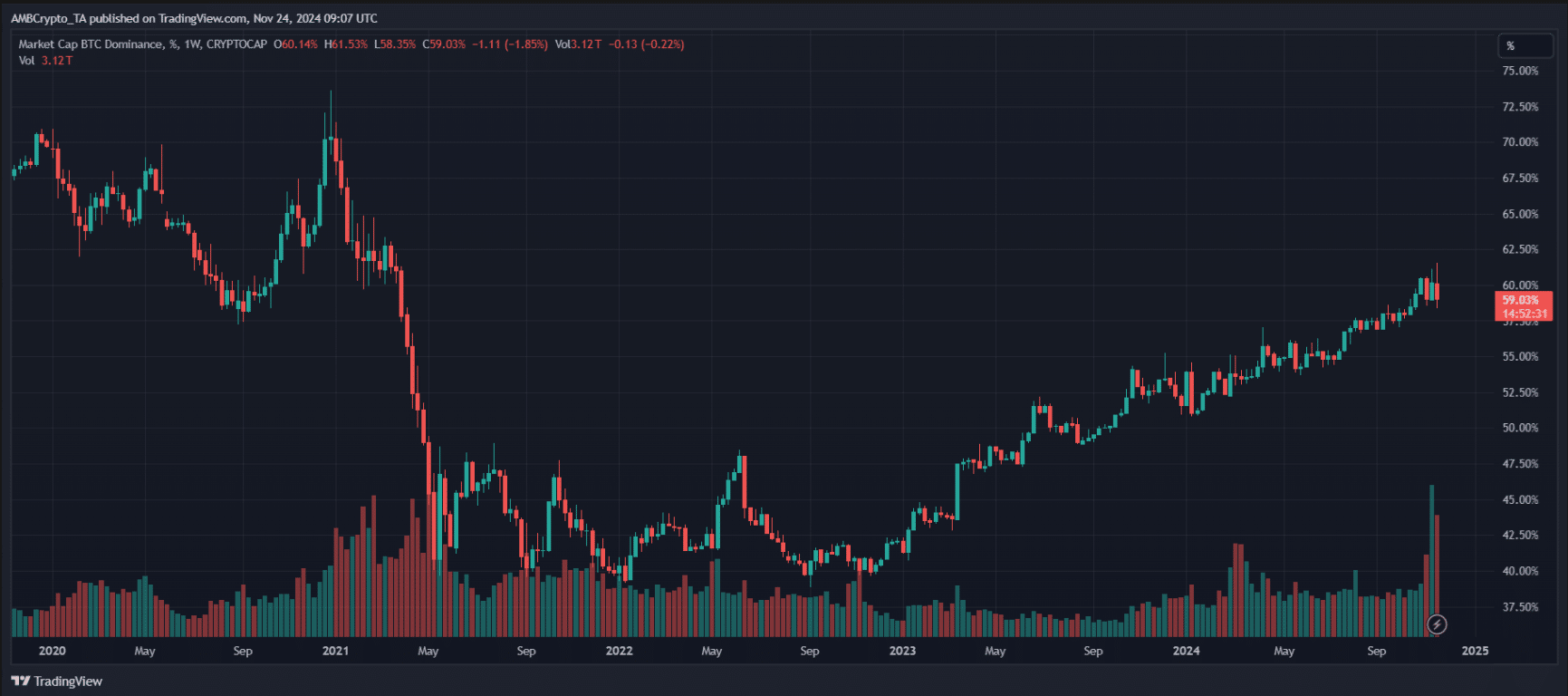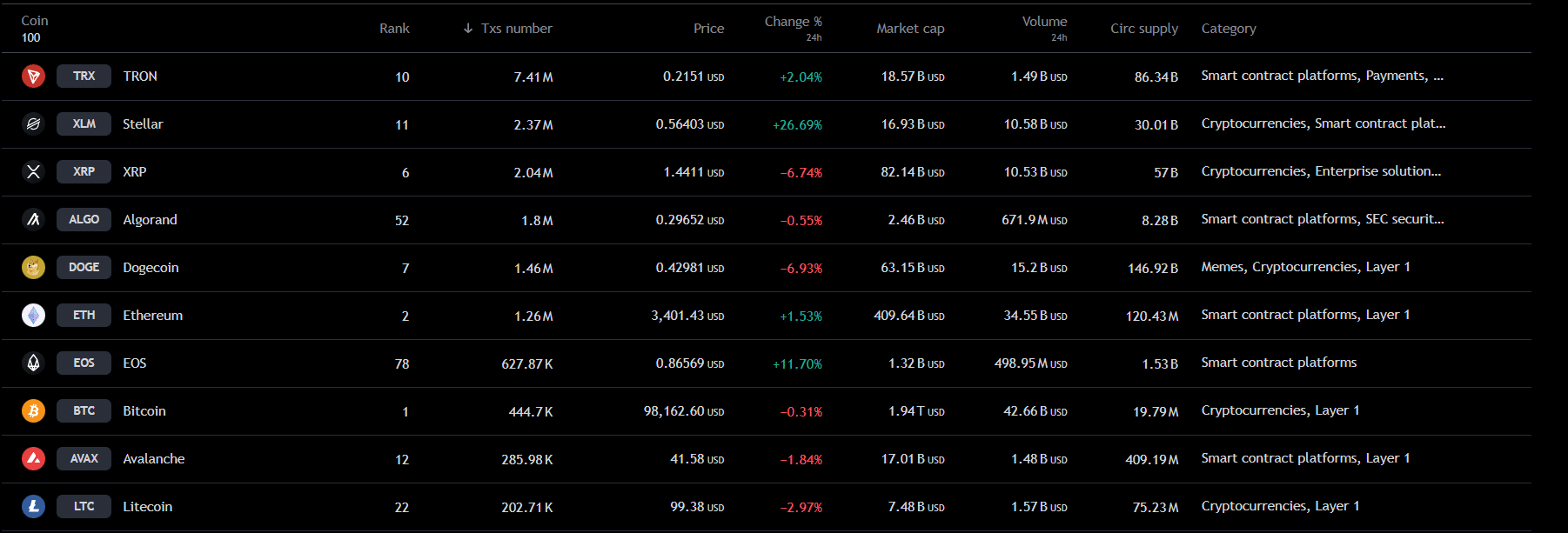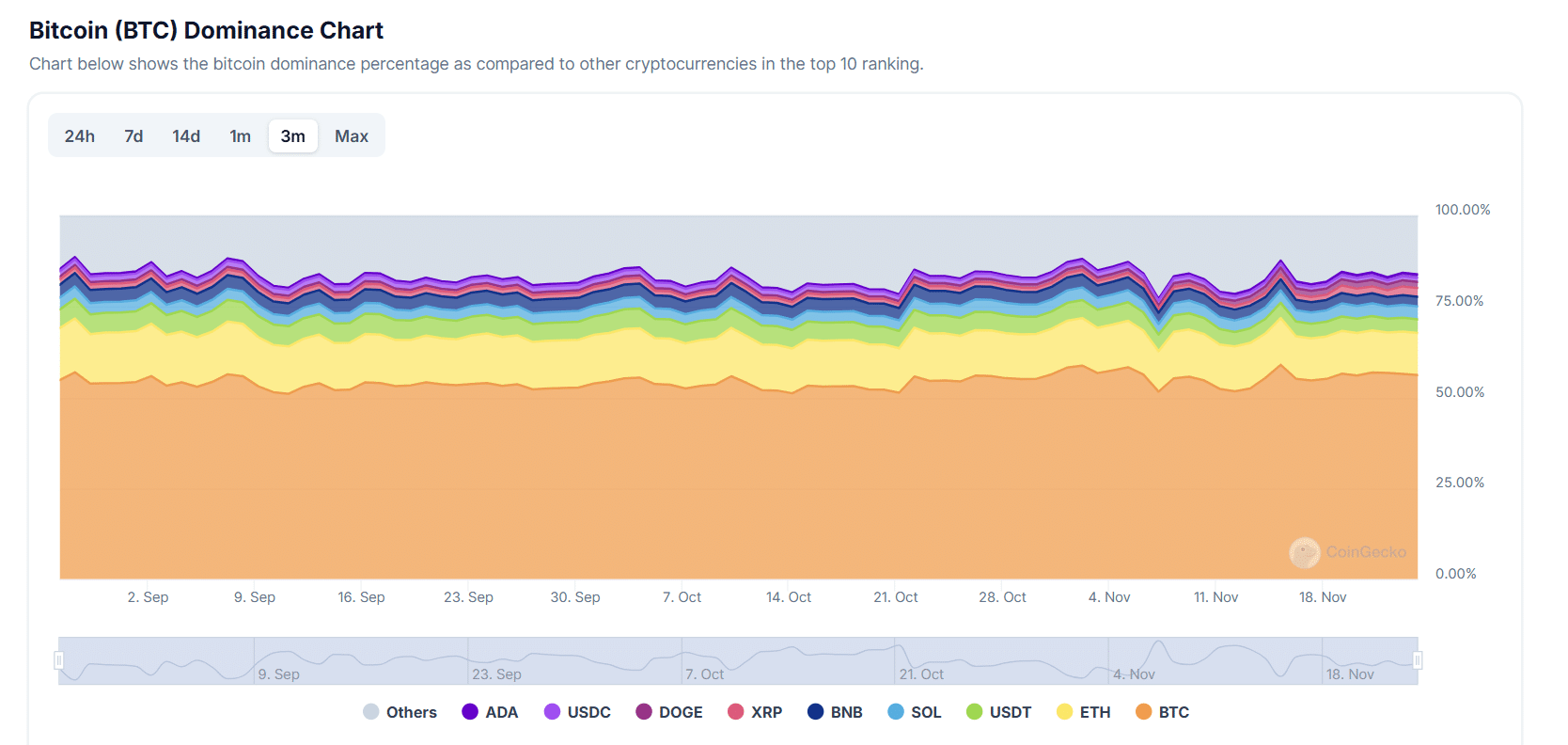Bitcoin’s Declining Dominance: A Temporary Dip or the Rise of Altcoins?
BTC
BTC/USDT
$13,058,902,586.17
$92,986.40 / $90,863.47
Change: $2,122.93 (2.34%)
+0.0056%
Longs pay
Contents
Bitcoin’s declining dominance fuels altcoin momentum – but is this the start of something long-lasting?
-
Bitcoin’s dominance slipped, sparking debate over altcoins’ growing market influence.
-
Capital shifted to altcoins as Bitcoin faced mounting competition in crypto markets.
Bitcoin’s market share has dipped below 50%, raising questions about its future dominance and the rise of altcoins in the crypto landscape.
The fall of Bitcoin’s dominance

Source: TradingView
As depicted in the attached chart, Bitcoin’s dominance has sunk below the crucial 50% mark, reflecting a significant shift in its control over the cryptocurrency market.
This decline has opened the floodgates for investor interest in altcoins, leading to capital pouring into Ethereum [ETH], Solana [SOL], and various emerging tokens – all of which are possibly challenging Bitcoin’s traditional stronghold.

Source: TradingView
The trends observed in Bitcoin’s dominance historically ebbed and flowed with market cycles.
Initially, Bitcoin dominated with over 90% of the market, but the 2017 bull run marked a watershed moment that saw altcoins surge and Bitcoin’s share decrease to under 40%.
Although Bitcoin recuperated some dominance in later cycles, reaching around 70% in 2021, its share has subsequently and steadily declined.
This cyclical ebb highlights how shifting narratives, technological innovation, and changing investor preferences constantly reshape the competitive landscape of digital assets.
Altcoin season: Coins leading the charge

Source: TradingView
The recent capital shift into altcoins is indicative of a potential altcoin season, which is reflected in the rankings based on active addresses.
Prominent altcoins including Ethereum, Stellar [XLM], and TRON [TRX] are witnessing increased traction, primarily driven by heightened network activity.

Source: TradingView
Transaction data shows TRON leading with a remarkable 7.41 million transactions, confirming its vital role in payment systems and the DeFi sector.
Stellar trails with 2.37 million transactions, demonstrating its importance in cross-border remittances, while Ethereum remains relevant with 1.26 million transactions, primarily focused on DeFi and NFTs.

Source: CoinGecko
Insights from Bitcoin’s declining dominance illustrate a transformation wherein altcoins such as Ethereum, Solana, and TRON are gaining substantial traction.
Ethereum, for example, recently secured over 20% of market share in select markets, while newer entrants like Avalanche [AVAX] are also observing steady capital inflows.
This dynamic marks a pivotal shift, showcasing redistribution as investors seek alternatives beyond Bitcoin.
Is altcoin season finally upon us?
The current shift from Bitcoin’s dominance toward altcoins can be attributed to several contributing factors.
Escalating regulatory pressures have nudged investors toward altcoins equipped with compliant frameworks such as Stellar, and macroeconomic instability has encouraged a diversified investment strategy.
Additionally, technological innovations like Ethereum’s upgrades bolster altcoin competitiveness.
Although this trend appears cyclical, Bitcoin’s waning market share reflects a maturing ecosystem where altcoins are not just participants but are becoming integral parts of the market’s landscape, hinting at a long-term evolution rather than a temporary “altcoin season.”
This diversification underlines evolving investor priorities in a swiftly transforming market.
Conclusion
As Bitcoin’s dominance dwindles, altcoins are likely to play a more significant role in the crypto space, presenting both opportunities and challenges. Observers will watch closely to see if this shift signals a deeper trend or remains a transient adjustment within the ever-evolving cryptocurrency landscape.
Crypto Vira
Comments
Yorumlar
Other Articles
BitMine Boosts Ethereum Stake to 461K ETH, Eyes Network Share Growth
January 1, 2026 at 08:06 PM UTC
Ethereum On-Chain Strength Hints at Potential L1 Season in 2026
January 1, 2026 at 10:20 AM UTC
Bitwise Files for 11 Altcoin ETFs Including AAVE, UNI Amid SOL, XRP Muted Gains
December 31, 2025 at 08:47 PM UTC
